Monthly Tech Digest: AI world drama
Welcome back to the Kitrum tech news digest. In the next 5 minutes, we’ll dive into the latest developments in the AI sphere, covering everything from dramas and innovations to exciting advancements. Stay tuned for a comprehensive overview.
What is happening at OpenAI?
Weird things are happening at OpenAI. November 17th marked a seismic shift at OpenAI, as the company dropped a bombshell announcement: CEO Sam Altman was fired due to alleged lapses in transparency and a loss of board confidence in his leadership of the pioneering AI organization.
The firing was swiftly followed by the appointment of CTO Mira Murati as interim CEO, ushering in unexpected turbulence. Adding to the drama, OpenAI severed ties with Altman’s right-hand man, President Greg Brockman, who, in a show of solidarity, resigned from his post.
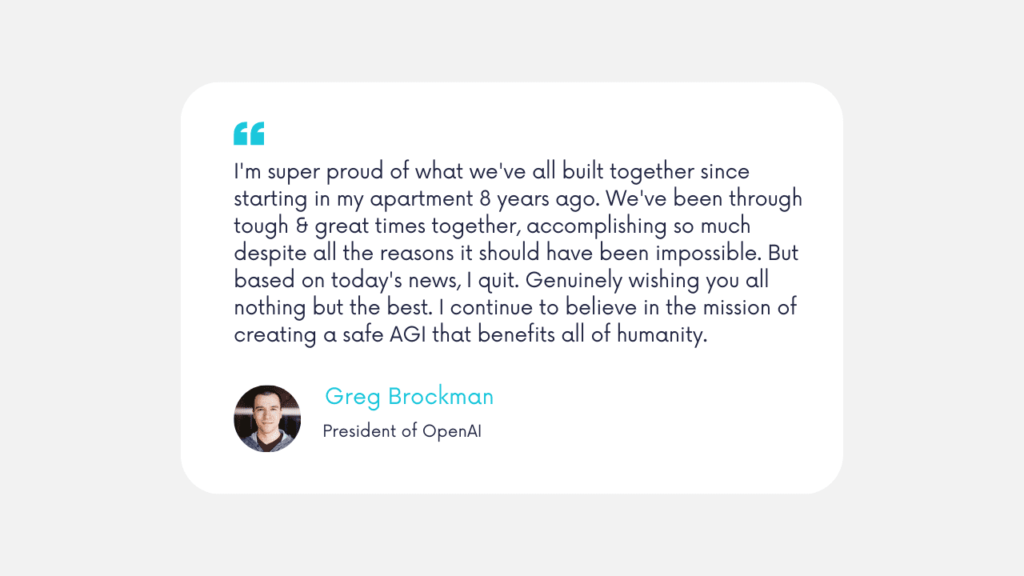
Brockman also claimed that on Thursday night, Mira Murati (OpenAI’s CTO and current interim CEO) was notified of Altman’s impending termination.
Furthermore, over the weekend, the plot thickened with a mass employee movement, with nearly 730 employees threatening to quit if Altman wasn’t reinstated. This dramatic standoff reached a crescendo as the employees called for the board’s resignation and the reappointment of Altman. The tumultuous events, fueled by Twitter speculation and internal discontent, threw OpenAI into a maelstrom, challenging the very fabric of the company’s mission and unity.
However, it seems that Microsoft is truly gaining advantages from this unfolding drama, as Altman has partnered with Microsoft to spearhead a research lab, partnering again with Brockman. Microsoft CEO Satya Nadella congratulated Sam Altman on joining Microsoft and intended to “set a new pace for innovation” through this collaboration. Nadella invited other former OpenAI colleagues, assuring them of ample resources for their success should they join the endeavor. Altman, in response, offered a cryptic statement on X, stating, “The mission continues.”
Meanwhile, Emmett Shear was appointed interim CEO at OpenAI amidst a rapid series of leadership changes. Following the dismissal of Sam Altman and his move to Microsoft, Shear replaces Mira Murati. Facing challenges in fundraising, AI regulation, and R&D, Shear outlined a three-point plan, including an investigation and customer retention efforts. His past statements on technology and AI development add a layer of complexity. The ongoing partnership with Microsoft remains crucial, especially as employees consider transitioning to the strategic backer.
Finally, on November 22nd, Sam Altman is making a surprising return as CEO of OpenAI, following a week of upheaval that began with his sudden dismissal. OpenAI, the most valuable U.S. startup, has also restructured its board, bringing in figures like Bret Taylor and Larry Summers. Microsoft, a major investor in OpenAI, had initially hired Altman, leading to protests and resignations at OpenAI. Altman’s return is seen as a positive step, with Microsoft expressing support and highlighting the pivotal role OpenAI plays in AI development.
Then, on Tuesday, OpenAI disclosed that following the previous board’s abrupt removal of Sam Altman as CEO last Friday, an agreement was reached for Altman’s return as CEO. This announcement came with the introducing of a new “initial” set of board members. Altman is set to replace interim CEO Emmett Shear, who, along with OpenAI CTO Mira Murati, had a brief tenure at the helm. The board, chaired by former Salesforce co-CEO Bret Taylor, includes Quora CEO Adam D’Angelo, a remaining member from OpenAI’s previous board, and Larry Summers.
Latest news in AI industry
While OpenAI faces a management crisis, its competitor, Anthropic, is strengthening. Thus, former OpenAI employees Daniela Amodei and Dario Amodei have released Claude 2.1. Yes, Anthropic proudly presents Claude 2.1, an advanced AI model that even outperforms GPT-4 Turbo. With funding from Amazon and Google, Anthropic is solidifying its market standing, positioning itself as a formidable competitor to OpenAI. Claude 2.1 can process up to 200,000 context tokens, equivalent to 150,000 words or 500 pages of text, surpassing the capacity of OpenAI’s latest development, GPT-4 Turbo.
Another big data startup, Dataminr (a New York-based giant data unicorn valued at $4.1 billion), is facing challenges and is set to lay off approximately 20% of its staff, totaling around 150 employees. CEO Ted Bailey cites economic conditions, operational efficiencies, and advancements in their AI platform as reasons for the decision. Employees were informed to work from home while awaiting details on their status. Despite the layoffs, the company plans to progress its AI platform, launching a new one in Q1.
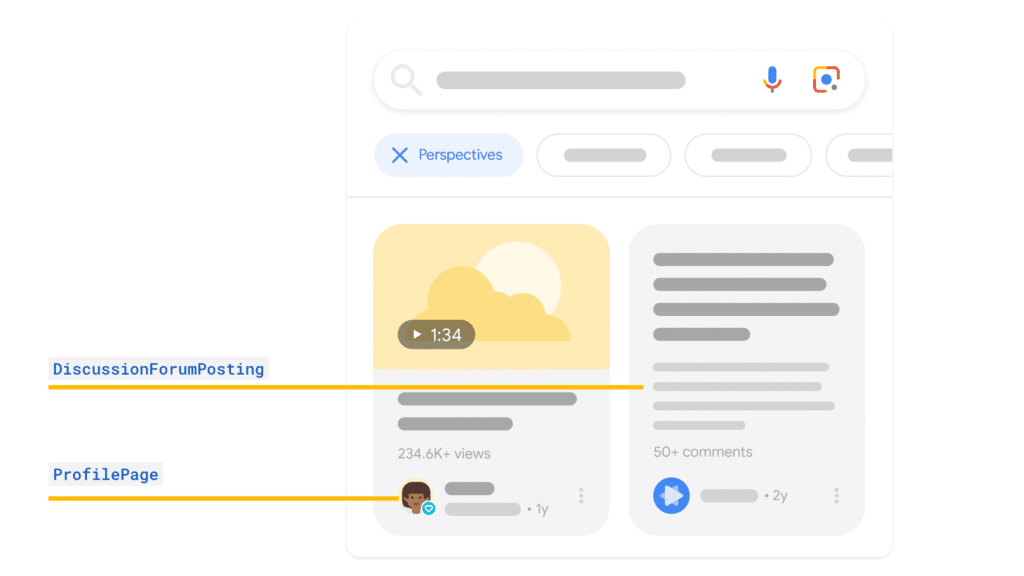
Speaking of Google, the company doesn’t face any challenges or undergo drama but maintains a steadfast focus on innovation and creation. This Monday, Google is coming out with new tools for website owners, especially those managing social media platforms and discussion forums, to improve the visibility of their content in search results. This initiative aligns with Google’s focus on prioritizing user-generated content over SEO-optimized content. The tools allow websites with first-person perspectives to signal to Google how their data is structured, ensuring accurate and comprehensive representation in search results. The ProfilePage markup lets creators showcase their profiles directly in Google Search, including details like name, handle, profile photo, and follower count.
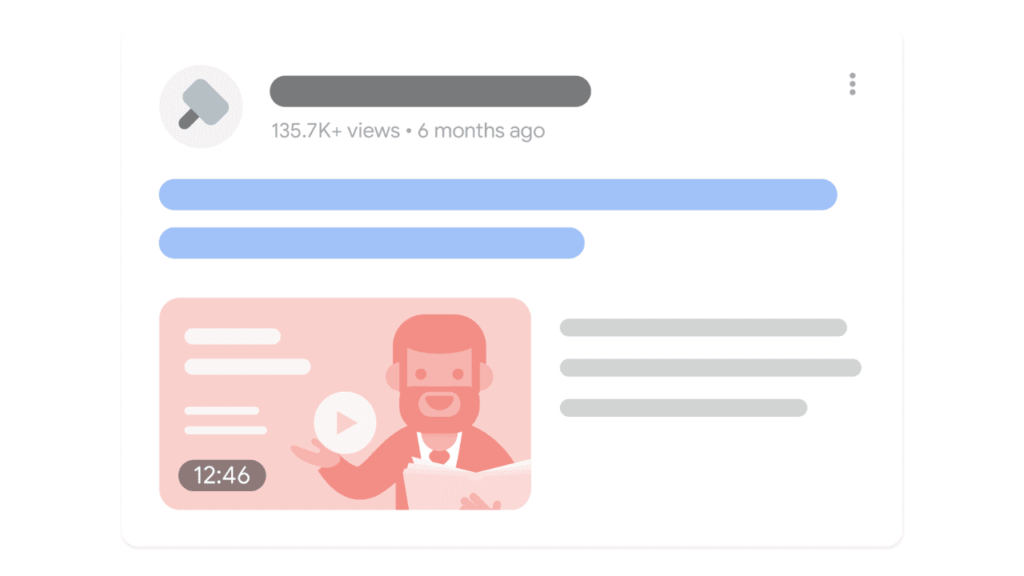
Continuing exciting news about Google: Google is making strides in machine learning models for weather forecasting, ranging from short-term to century-level predictions. DeepMind’s “nowcasting” models focus on immediate forecasts by analyzing precipitation maps, while MetNet-3 predicts up to 24 hours ahead using data from a larger area. The latest development, GraphCast, covers the “medium-range” scale, predicting major weather patterns globally for up to 10 days in the future.
A glimpse into the future of spatial computing
“Today marks the beginning of a new era for computing,” said Tim Cook, Apple’s CEO, in the summer of 2023, introducing Apple Vision Pro: Apple’s first spatial computer.
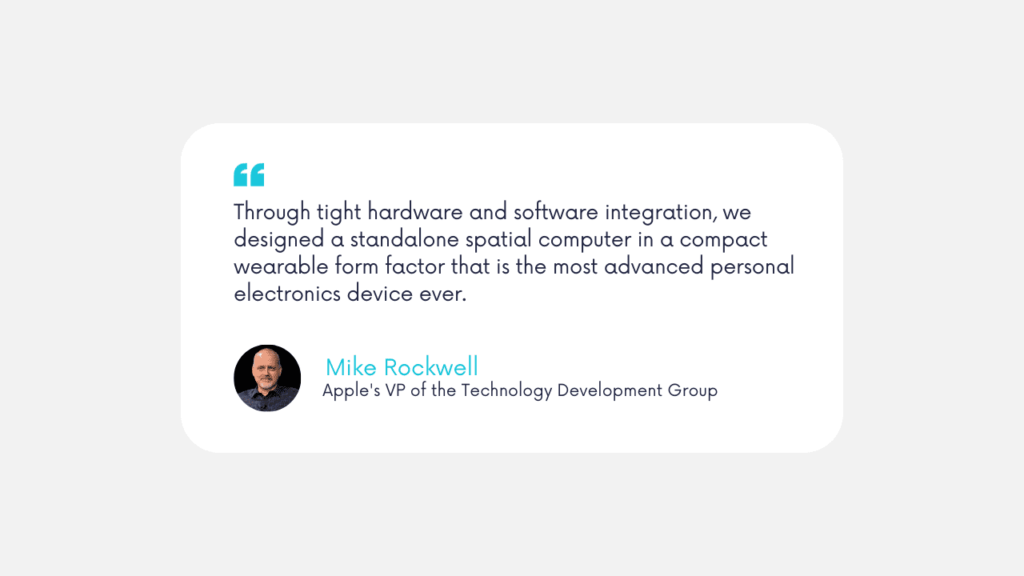
Anticipation builds across the tech industry as Apple gears up the release of its groundbreaking spatial computing device. Set to be available in the U.S. early in 2024, the device seamlessly integrates digital content with the physical world, offering an innovative user experience driven by gestures, voice commands, and eye movements.
But what other promises does the Apple Vision Pro hold? What sets its uniqueness apart in the realm of spatial computing? Let’s take a small overview:
- Apple Vision Pro promises to transform personal computing, changing interactions with apps, capturing memories, enjoying entertainment, and connecting in FaceTime.
- An infinite canvas for apps: visionOS will allow apps to break free from display boundaries, offering infinite screen real estate and multitasking options.
- Two ultra-high-resolution displays will create a personal movie theater, immersive gaming experiences, and access to Apple Arcade.
- Immersive environments: Dynamic landscapes will help users focus, reduce clutter, and control their level of immersion.
- Memories come alive: Imagine reliving your favorite concert or family gathering as if you were right there again. Spatial Audio and a three-dimensional camera will be able to capture and relive memories with life-size photos and videos.
- FaceTime becomes spatial: Calls reflect participants in life-size tiles, with Spatial Audio and digital representations of users (Personas).
- Even more app experiences: New App Store and hundreds of thousands of compatible iPhone and iPad apps.
It will also feature a revolutionary operating system and user interface, groundbreaking design, unmatched innovation in hardware, and industry-leading privacy and security.
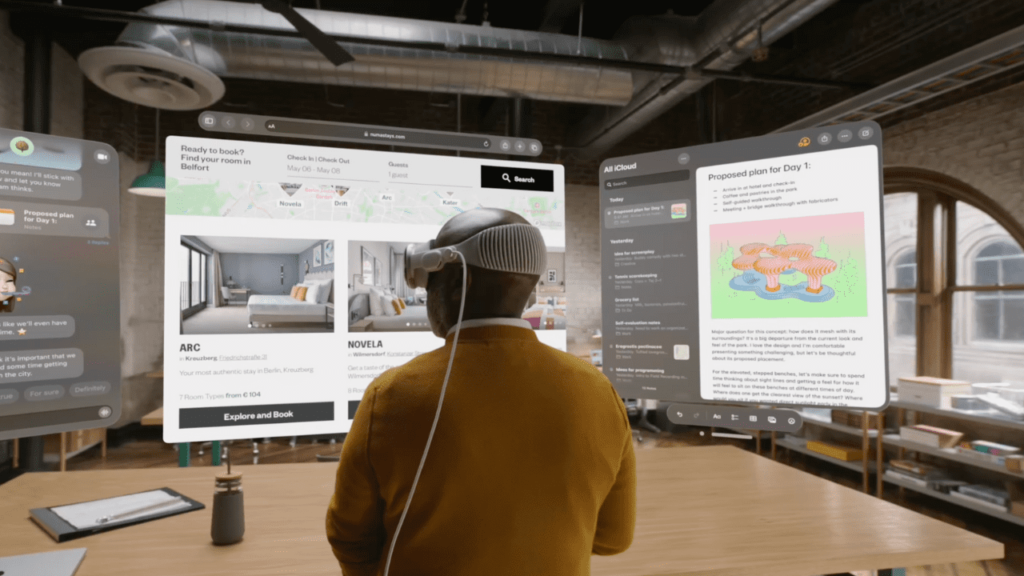
What sets it apart is the absence of optional accessories or controllers; the entire experience is controlled solely by hands, eyes, and voice. The high costs suggest it’s not aimed at the masses, underlining the product’s focus on delivering a unique and cutting-edge spatial computing experience.
Yet, the anticipation surrounding Apple Vision Pro is rising, even though there’s no video footage yet. Many believe it’s poised to revolutionize and usher our world in a new era which is definitely going to happen. Next year is just around the corner – looking forward to this stunning revolution.






